How to grow dill?

Amateur gardeners need to know exactly how to grow dill, what should be the care of this plant. It is necessary to figure out how much it grows, what kind of soil dill loves. And also it is worth figuring out how to water it for rapid growth in the open field, and how to organize growing in a greenhouse from seeds.
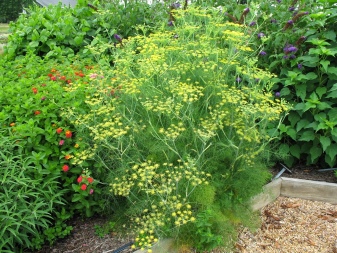
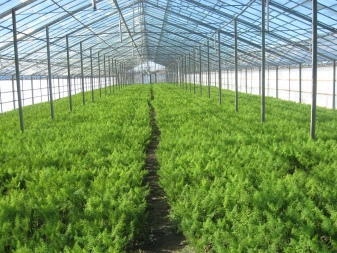
Variety selection
Dill greens are distinguished by excellent culinary combinations. This plant looks relatively beautiful in the garden beds. But in order to enjoy it to the fullest, in order to get a good culinary result, you need to choose the right variety. So, early types of dill cannot produce a lot of greens. However, they work very well as culinary preparations.
Among the early maturing varieties, the "Grenadier" is often recommended. It takes about 30 days between the formation of the first shoots and the readiness of the crop for harvest. The plant is grown in almost any conditions. It has excellent productivity. The taste is good enough.
The "Redut" variety is also in demand. On each of his bush, you can get up to 40 g of greens. Spreading for such dill is atypical. The aroma is sophisticated. The spice yield is quite large.
For lovers of greenery, a mid-season group is better suited. She will have time to give seed inflorescences under normal conditions. So, "Lesnogorodsky" dill grows up to 1.3 m. It is suitable for a wide variety of culinary purposes. Leafiness persists for a long time.

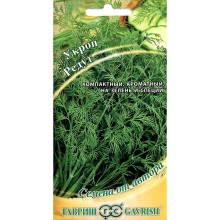

The alternatives in this group would be:
- Amazon;
- Richelieu;
- "Buyan";
- "Hercules".
Connoisseurs of leafy plants should choose late-ripening varieties. Among them, Borey stands out favorably.... It will give good greens in an average of 40-65 days. Spices can be obtained in 65-95 days. Stem production is delayed for a long time.
You can also choose:
- "Kutuzovsky";
- "Frost";
- Dill;
- "Peacock".

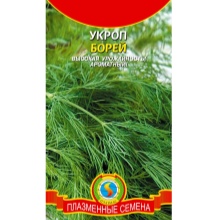

How to grow outdoors?
Landing place
It is believed that dill is picky about various factors, including the ground. However, this does not mean that such moments can be ignored. Moreover, with the right approach, the plant will respond very well. It has been established that such a culture loves soil with a good level of moisture, which is well dug up in advance. It is necessary to choose areas with loose soil that has a neutral chemical reaction.
Dill, for all its unpretentiousness, grows poorly if the acidity is below 6.3... You can not plant it where lime or dolomite flour was introduced. Adjacency to almost any vegetables is allowed. But at the same time, it is better to exclude direct close contact with them; close planting of fennel is also undesirable.
The predecessor can be anything other than celery.
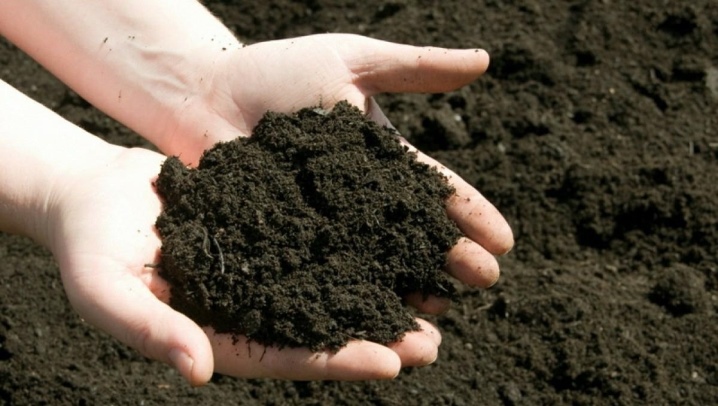
Sowing dates
Fragrant bushes produce crops throughout the season. Therefore, planting can be done several times a year. The specific moment is selected taking into account the goal set by the gardeners. So, if they strive to get a pleasantly smelling greenery, then the crop should be planted in spring and / or autumn. If getting shoots with umbrellas is a priority, summer planting is preferred.
It is necessary to consider how many days a particular variety grows. This moment should be selected taking into account the climatic characteristics of a particular region. Usually they are engaged in sowing from the last days of April, they finish work in mid-May. In summer, you can plant dill at any arbitrary moment.In the fall, they work in October and November, but only so that the plant does not germinate before the onset of frost.
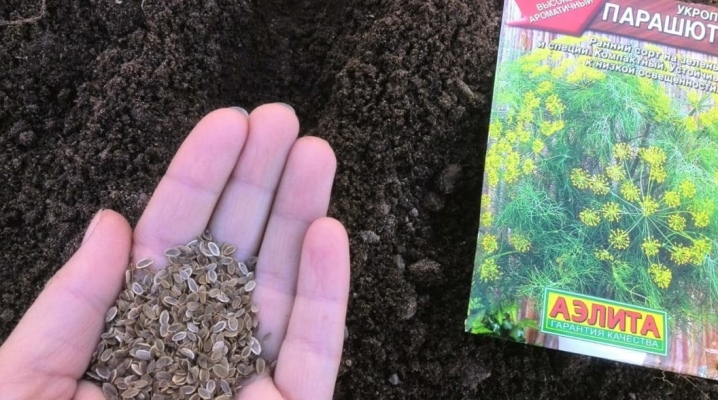
How do I prepare the seeds?
A good harvest and even the seedlings themselves cannot be grown without preparing planting material. Fast shoots can only be obtained with proper soaking. This procedure removes essential oils that are abundantly covering the embryos. Soaked seeds also produce more viable seedlings. Finally, with this preparation, reliable protection against plants can be achieved.
Some farmers note that sowing with dry seeds is still possible. However, in this option, the seedling time will increase. The easiest way to do without soaking is in the fall months. If you still decide to soak the seeds, it is preferable to use non-carbonated bottled water instead of tap water. You can drastically speed up the process if you put dill seeds in a gauze bag dipped in vodka for 15 minutes; after that they will have to be washed with plain clean water and dried.
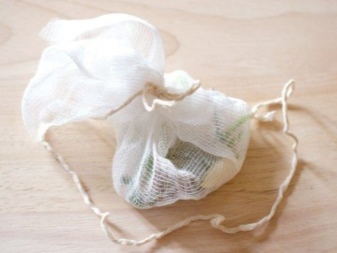
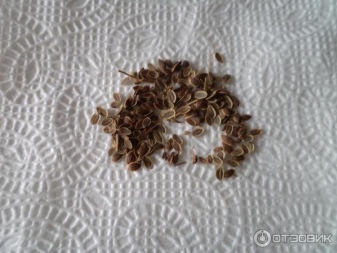
When using growth activators, you just need to follow the instructions. Each drug has its own nuances:
- "Epin" is preferable if frost is likely;
- "Fitosporin" will help to exclude the defeat of ailments;
- Zircon is especially powerful in stimulating development and helping the emergence of roots.
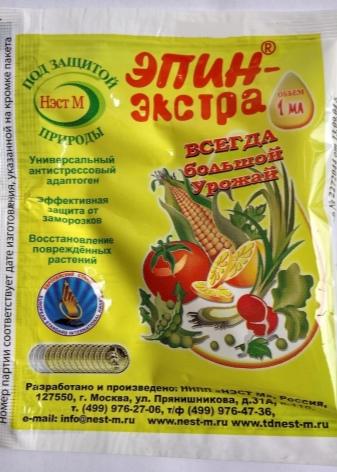
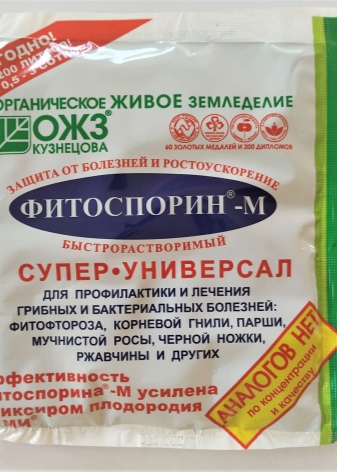
Of the available means for soaking, the following may be suitable:
- infusion of wood ash;
- camomile tea;
- aloe juice;
- permanganate;
- honey;
- potato juice;
- mushroom broth.
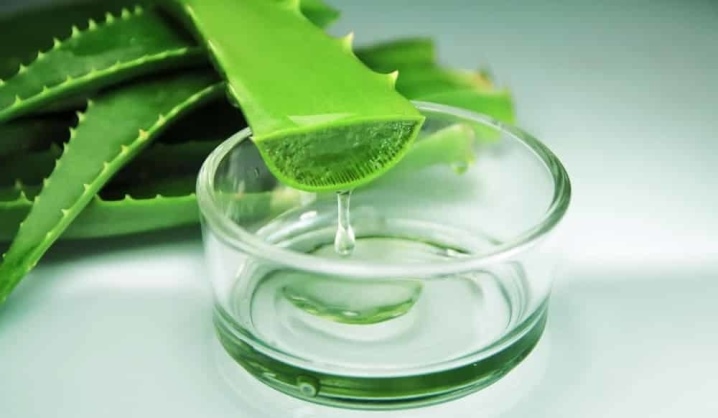
Landing
It is believed that dill seeds germinate at a temperature of 3-5 degrees. However, it is most advisable to wait until the air warms up to 16-18 degrees. Correct planting in some cases allows you to get lush dill bushes without an umbrella until autumn. To do this, instead of rows, sowing is performed in bunches. Piles of seeds are poured into the recesses, which are then covered with a thin layer of earth; it will have to be compacted and shed - well, if suddenly then the umbrellas are needed earlier, the plantings need only be defused.
It is necessary to dig up the soil in the fall, preferably deeper. At this moment, fertilizers are necessarily used. Their consumption is 5 kg per 1 m2. Optimal feeding is cow dung or bird droppings. In some cases, humus is used.
Mineral supplements are also helpful. Among them, superphosphate and potassium salt are considered the best solution. They are consumed in a volume of 0.2 kg and 0.15 kg per 1 m2, respectively. With the arrival of spring, it is required to thoroughly loosen the ground. Large watering should be done about 48 hours before planting.
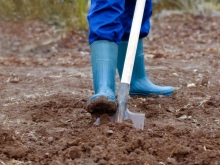

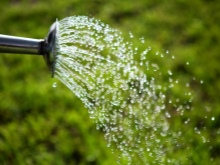
Care
In order for dill to grow in the garden, no extraordinary measures are needed. However, a competent approach is still useful, because in this case, productivity will be maximized. Planting should be watered as often as possible. Weak or insufficiently abundant watering leads to inhibition of development and the elimination of the arrow. True, it is also not worth pouring dill rows.
Stagnant fluid leads to a loss of characteristic aroma. The optimal water consumption is 20-30 liters per 1 m2. For this reason, by the way, it is highly recommended to arrange good drainage. There is no need to feed dill during the growing season, including in summer. All fertilizers must be laid before the seeds or seedlings are planted.
An exception is the situation when the bushes develop extremely slowly. In this case, standard farming techniques allow small amounts of fertilizer to be added. Yellowing bushes usually indicate a lack of nitrogen. But it is undesirable to get carried away with it. It is necessary to weed and loosen the dill immediately after its rooting. Get rid of weeds at an early stage more often; then, when the plant is rooted, this procedure is carried out every 14 days.
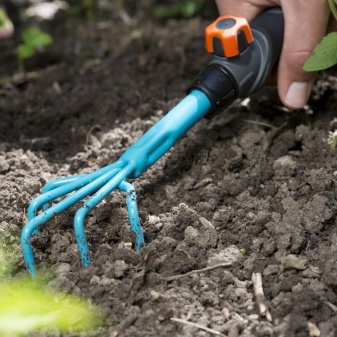
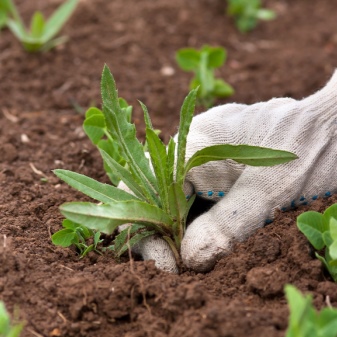
It is necessary to loosen the planting by 5 cm in depth. Loosening must be abandoned in sufficiently loose areas. Watering with urea is often recommended for rapid growth.Instead, cow dung and nettle infusion are sometimes used.
Development can be accelerated in other ways - often for this, plantings need to be thinned out.
Shyness has a harmful effect even on this generally unpretentious plant. Regular loosening also plays an important role - it is likely that many cases of poor growth are associated with it. Young plants can be transplanted with thinning. But adult dill cannot be transplanted in principle, even if there is an urgent need. All the same, he will hardly survive such a procedure; and even with young shoots one must hurry before it wilts.

Ammonia (aka aqueous solution of ammonia) can also help to activate growth. This top dressing works for a long time and helps to ensure the splendor of the plants. However, one must always remember that this is a potentially hazardous (even in low concentration) chemical. Under the action of ammonia, the soil is acidified, which increases the risk of plant damage by pathological fungi. When processing, it is necessary to use personal protective equipment; more gentle support methods are the use of boric acid or yeast.
Seeds are sometimes initially soaked in boric acid. Foliar dressing is carried out during flowering and budding. Yeast is used to loosen the soil, which is very important in clayey areas. It is necessary to breed them quite strongly. Such dressings are carried out exactly every 2 weeks.
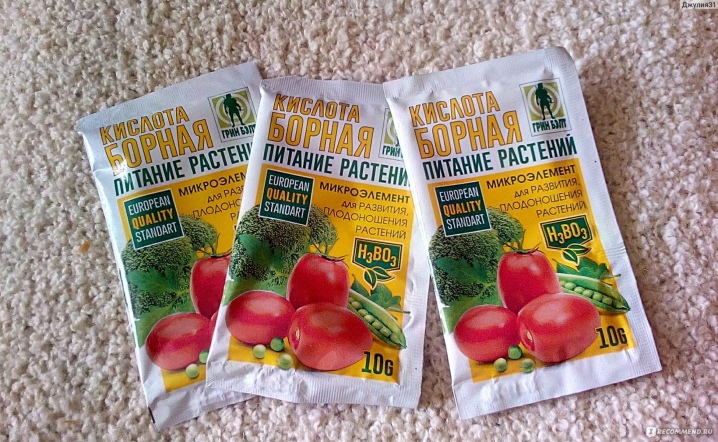
Growing in other conditions
In the greenhouse
To properly grow dill in winter means to bury the seeds to a depth of 1.5-2 cm. Every 14-20 days, it is required to sow the seeds, otherwise a stable new harvest cannot be ensured. Fertilization should be done periodically. You can fill the greenhouse with ordinary earth, and sandy and clayey soil. But the most preferable is the soil mixture that is usually recommended for outdoor planting.
It is recommended to dig up and fertilize the beds in the fall - in this sense, there is no specificity of greenhouse cultivation. Landing directly into the ground is permissible if it does not freeze even in the coldest month. Otherwise, you will have to use deep boxes filled with soil mixture. Such boxes should be equipped with water drainage channels.
Important: to properly care for dill in the greenhouse means watering it in a timely manner. Failure to comply with this recommendation leads to unexpected flowering and loss of green mass.
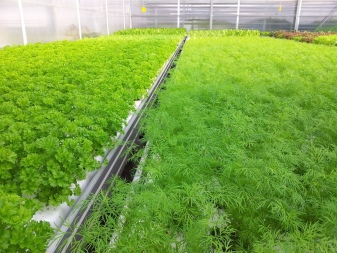
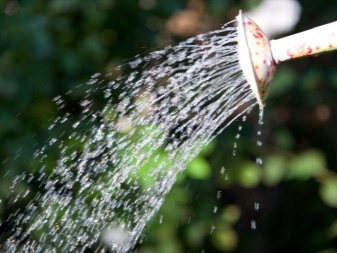
The temperature when keeping this plant should be at least +15 degrees. It is categorically impossible to water the culture with cold water. We must also remember about its photophilousness, because of which it is even necessary to resort to artificial lighting. Dill should be illuminated in such a way as to extend the daylight hours to at least 12 hours. This moment is especially important on cloudy days.
It is worth considering that some varieties survive the lack of light better than others. Many of them were bred by domestic breeders. Early-maturing varieties are most preferred for commercial cultivation in greenhouses. Late-ripening varieties will give the greatest yield, but it is not so easy to wait for it. In polycarbonate greenhouses, heaters are preferred.
With the onset of darkness, the room should be covered with heat-insulating material. It is better to mount it in advance and on a permanent basis, so as not to mess around every day. The land in an unheated greenhouse is regularly watered with boiling water. In greenhouse conditions, dill can also act as a compactor for tomatoes and peppers. You can get 0.5 kg of greens from one garden bed - if this result is not achieved, then you still need to experiment.

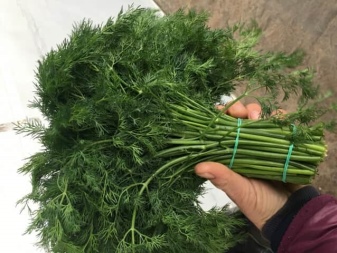
Houses
This moment is no less important than the secrets of growing dill bushes in the country or in the garden. For cultivation on the windowsill, it is better to abandon early hybrids, preferring mid-season or even late species. It is not necessary to use only one variety. The garden soil is taken the same as for ordinary cases.It is recommended to feed the plants with mineral complexes; it is advisable to use phytolamps for illumination and spray guns for irrigation.
At home, you can also use hydroponics. In any case, you need to choose the right place for landing. If it is not possible to place the dill anywhere, except for the northern window, the illumination is additionally intensified. Containers made from natural materials are not worse than plastic ones and at the same time look very good.
Any planting tank must have drainage channels.
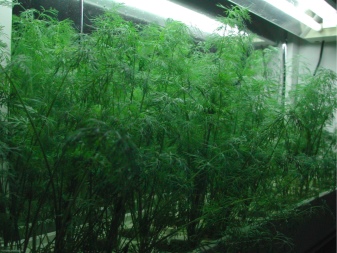
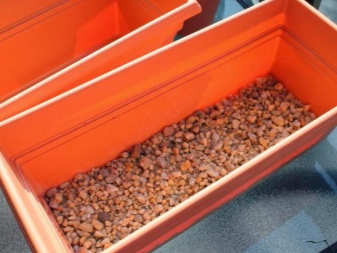
The depth of the container should be at least 15-20 cm - this is due to the fact that picking is not carried out during cultivation. Top dressing of seedlings should occur at least 1 time in 30 days. Better to do this even more frequently. Phytolamps should not be placed very high so that the shoots receive an intense light flux. Lining the foam sheet will help keep out the cold.
The drainage layer is created from a brick fight. Expanded clay can also be used for this purpose. Spraying from a spray bottle is carried out every 2-3 days. Top dressing with wood ash is very useful. In addition to her, it is worth using complex mineral compositions.

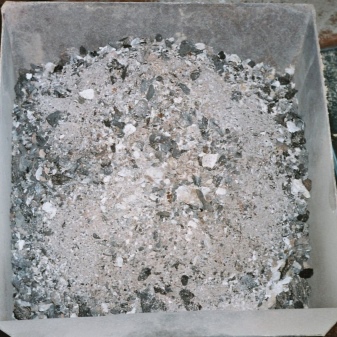
Diseases and pests
The danger is peronosporosis. When affected by such an infection, the leaves are covered with dirty yellow spots. When neglected, the foliage turns brown and dries up. The disease develops rapidly. There are no available remedies; at the initial stage, the plant is treated with biological products.
If the lesion is neglected, chemicals will have to be used. Often dill plantings suffer from powdery mildew. All affected bushes are removed. More or less healthy - they are treated with onion-mustard broth or a thick solution of soap with the addition of iodine. In the most difficult cases, powerful reagents are used.
It is important to know and folk remedies for aphids. Rather, it can be removed even with strong drugs, but such a solution is unlikely to be safe and practical. A solution of liquid soap turns out to be a good helper (it is diluted to a concentration of 3%). This handy tool is not only very effective, but also harmless. Ash or tobacco infusion is also often recommended.

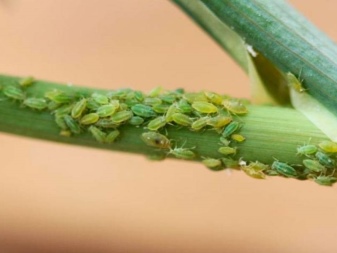
If yellow larvae are seen, then the carrot fly is eating the dill. It is especially active in cool, humid places. Wormwood and tomato infusions help well from this insect. If the plant darkens, there is a high probability that this is a phomosis. White bloom is predominantly associated with powdery mildew.
A phoma infection can even affect the roots of dill. To combat it, use Bordeaux liquid diluted to 1%. Powdery mildew develops especially often against a background of high humidity. Affected bushes die in about a week.
You cannot eat them.
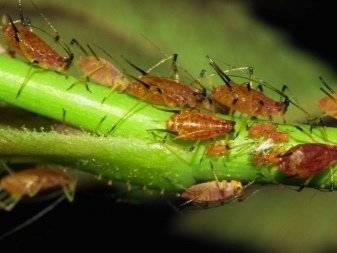
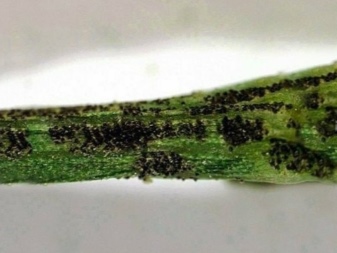
Possible problems
If the dill turns black in the beds and dries, then the already mentioned phomosis is almost guaranteed to blame. The reason why the plant withers may be of a different kind. Sometimes it is associated with a defeat of Fusarium or verticillary wilting. The same is true for aphids and umbrella moths. But if the plant turns blue, it can be much more difficult to deal with the problem, because it is not really described anywhere; there are materials about redness, yellowing and blackening, about blueing - no.
If in any year there was a global failure, the main thing that needs to be done in the next season is to acquire high-quality seeds and take care of the condition of the earth. And you should also use more fertilizer. All infected plants must be removed. On hot days, dill beds are covered with a canopy. Check if there is enough light and if moisture is optimal.
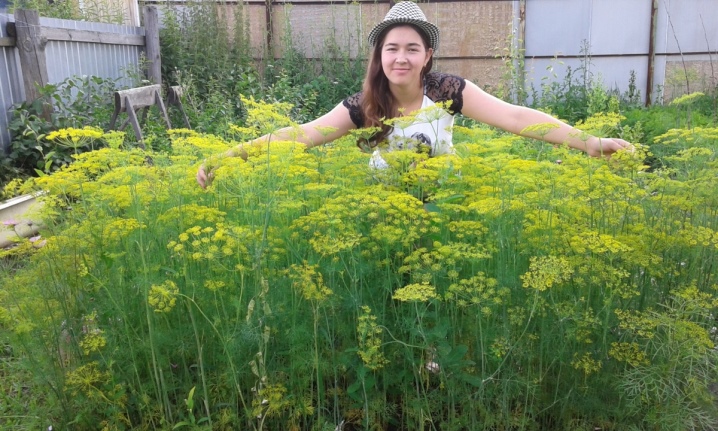













The comment was sent successfully.